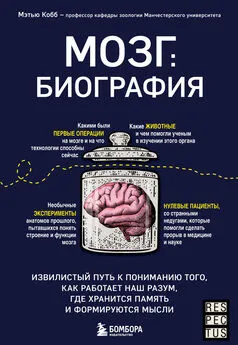Барбара Тверски - Ум в движении [Как действие формирует мысль] [litres]
- Название:Ум в движении [Как действие формирует мысль] [litres]
- Автор:
- Жанр:
- Издательство:Литагент Альпина
- Год:2020
- Город:Москва
- ISBN:978-5-0013-9354-2
- Рейтинг:
- Избранное:Добавить в избранное
-
Отзывы:
-
Ваша оценка:
Барбара Тверски - Ум в движении [Как действие формирует мысль] [litres] краткое содержание
Книга известного когнитивного психолога Барбары Тверски посвящена пространственному мышлению. Это мышление включает в себя конструирование «в голове» и работу с образами в отношении не только физического пространства, но и других его видов – пространств социального взаимодействия и коммуникации, жестов, речи, рисунков, схем и карт, абстрактных построений и бесконечного поля креативности. Ключевая идея книги как раз и состоит в том, что пространственное мышление является базовым, оно лежит в основе всех сфер нашей деятельности и всех ситуаций, в которые мы вовлекаемся.
Доступное и насыщенное юмором изложение серьезного, для многих абсолютно нового материала, а также прекрасные иллюстрации привлекут внимание самых взыскательных читателей. Они найдут в книге как увлекательную конкретную информацию о работе и развитии пространственного мышления, так и важные обобщения высокого уровня, воплощенные в девять законов когниции.
Ум в движении [Как действие формирует мысль] [litres] - читать онлайн бесплатно ознакомительный отрывок
Интервал:
Закладка:
LePort, A. K., Mattfeld, A. T., Dickinson-Anson, H., Fallon, J. H., Stark, C. E., Kruggel, F., McGaugh, J. L. (2012). Behavioral and neuroanatomical investigation of highly superior autobiographical memory (HSAM). Neurobiology of Learning and Memory , 98(1), 78–92.
Категории вещей
Borges, J. L. (1966). Other inquisitions 1937–1952 . New York, NY: Washington Square Press.
Brown, R. (1958). How shall a thing be called? Psychological Review , 65(1), 14.
Rosch, E. (1978). Principles of categorization. In E. Rosch & B. B. Lloyd (Eds.), Cognition and categorization (pp. 27–48). Hillsdale, NJ: Erlbaum. [Я позаимствовала прелестную цитату из Борхеса во влиятельной статье Элеанор Рош, обобщающей результаты ее изучения категоризаций.]
Быстрое освоение слов детьми в возрасте одного-двух лет
Miller, G. A., & Gildea, P. M. (1987). How children learn words. Scientific American , 257(3), 94–99. http://dx.doi.org/10.1038/scientificamerican0987.
Базовый уровень
Brown, R. (1958). How shall a thing be called? Psychological Review , 65(1), 14.
Markman, E. M. (1989). Categorization and naming in children: Problems of induction . Cambridge, MA: MIT Press.
Rosch, E. (1978). Principles of categorization. In E. Rosch & B. Lloyd (Eds.), Cognition and categorization (pp. 27–48). Hillsdale, NJ: Erlbaum.
Части объединяют базовый уровень
Brown, R. (1958). How shall a thing be called? Psychological Review , 65(1), 14.
Rosch, E. (1978). Principles of categorization. In E. Rosch & B. Lloyd (Eds.), Cognition and categorization (pp. 27–48). Hillsdale, NJ: Erlbaum.
Tversky, B., & Hemenway, K. (1984). Objects, parts, and categories. Journal of Experimental Psychology: General , 113(2), 169.
Лица – особое дело
Diamond, R., & Carey, S. (1986). Why faces are and are not special: An effect of expertise. Journal of Experimental Psychology: General , 115(2), 107.
Liu, J., Harris, A., & Kanwisher, N. (2010). Perception of face parts and face configurations: An fMRI study. Journal of Cognitive Neuroscience , 22(1), 203–211.
Tanaka, J. W., & Farah, M. J. (2003). The holistic representation of faces. In M. A. Peterson & G. Rhodes (Eds.), Perception of faces, objects, and scenes: Analytic and holistic processes (pp. 53–74). Oxford, England: Oxford University Press.
Способность распознавания лиц
Wilmer, J. B. (2017). Individual differences in face recognition: A decade of discovery. Current Directions in Psychological Science , 26, 225–230. Summarized in Einstein, G., & May, C. (2018). Variations in face recognition ability: Stable, specific, and substantial. APS Observer , 31, 38–39.
Прозопагнозия
Calder, A. J., & Young, A. W. (2005). Understanding the recognition of facial identity and facial expression. Nature Reviews Neuroscience , 6(8), 641–651.
Duchaine, B. C., Parker, H., & Nakayama, K. (2003). Normal recognition of emotion in a prosopagnosic. Perception , 32(7), 827–838.
Rosenthal, G., Tanzer, M., Simony, E., Hasson, U., Behrmann, M., & Avidan, G. (2017). Altered topology of neural circuits in congenital prosopagnosia. bioRxiv , 100479.
Sacks, O. (2009). The man who mistook his wife for a hat . London, England: Picador.
Эмоции и кооперация
Harari, Y. N. (2014). Sapiens: A brief history of humankind . New York, NY: Random House.
Сначала чувства
Frijda, N. H. (2000). The psychologists’ point of view. In M. Lewis, J. M. Haviland-Jones, & L. F. Barrett (Eds.), Handbook of emotions (pp. 59–74). New York, NY: Guilford Press.
Frischen, A., Eastwood, J. D., & Smilek, D. (2008). Visual search for faces with emotional expressions. Psychological Bulletin , 134(5), 662–676.
Roberts, N. A., Levenson, R. W., & Gross, J. J. (2008). Cardiovascular costs of emotion suppression cross ethnic lines. International Journal of Psychophysiology , 70(1), 82–87.
Zajonc, R. B. (1984). On the primacy of affect. American Psychologist , 39(2), 117–123.
Эмпатия
Chartrand, T. L., & Bargh, J. A. (1999). The chameleon effect: The perception – behavior link and social interaction. Journal of Personality and Social Psychology , 76(6), 893.
Hatfield, E., & Rapson, R. L. (2010). Emotional contagion. In I. B. Weiner & W. E. Craighead (Eds.), Encyclopedia of psychology , 4th ed. Hoboken, NJ: Wiley.
Madsen, E. A., & Persson, T. (2013). Contagious yawning in domestic dog puppies ( Canis lupus familiaris ): The effect of ontogeny and emotional closeness on low-level imitation in dogs. Animal Cognition , 16(2), 233–240.
Romero, T., Konno, A., & Hasegawa, T. (2013). Familiarity bias and physiological responses in contagious yawning by dogs support link to empathy. PLoS One , 8(8), e71365.
Saxe, R., & Kanwisher, N. (2003). People thinking about thinking people: The role of the temporo-parietal junction in “theory of mind.” Neuroimage , 19(4), 1835–1842.
Waters, S. F., West, T. V., & Mendes, W. B. (2014). Stress contagion: Physiological covariation between mothers and infants. Psychological Science , 25(4), 934–942.
Yong, M. H., & Ruffman, T. (2014). Emotional contagion: Dogs and humans show a similar physiological response to human infant crying. Behavioural Processes , 108, 155–165.
Распознавание эмоций по выражению лица
Ekman, P., & Friesen, W. V. (2003). Unmasking the face: A guide to recognizing emotions from facial clues . Los Altos, CA: Malor Books.
Oatley, K., Keltner, D., & Jenkins, J. M. (2006). Understanding emotions . Malden, MA: Blackwell.
Tracy, J. L., & Robins, R. W. (2008). The automaticity of emotion recognition. Emotion , 8(1), 81.
Оттенки эмоций и распознавание эмоций
Barrett, L. F. (2006). Are emotions natural kinds? Perspectives on Psychological Science , 1(1), 28–58.
de Gelder, B., Meeren, H. K., Righart, R., Van den Stock, J., van de Riet, W. A., & Tamietto, M. (2006). Beyond the face: Exploring rapid influences of context on face processing. Progress in Brain Research , 155, 37–48.
Lewis, M., Haviland-Jones, J. M., & Barrett, L. F. (Eds.). (2010). Handbook of emotions . New York, NY: Guilford Press.
Russell, J. A. (1994). Is there universal recognition of emotion from facial expressions? A review of the cross-cultural studies. Psychological bulletin , 115(1), 102.
Russell, J. A., & Barrett, L. F. (1999). Core affect, prototypical emotional episodes, and other things called emotion: Dissecting the elephant. Journal of Personality and Social Psychology , 76(5), 805.
Нюансированность распознавания вкусов
How does our sense of taste work? (2016, August 17). Взято с сайта https://www.ncbi.nlm.nih.gov/pubmedhealth/PMH0072592/.
Цвета – базовые и в названиях карандашей
Berlin, B., & Kay, P. (1991). Basic color terms: Their universality and evolution . Berkeley: University of California Press.
Brown, R. W., & Lenneberg, E. H. (1954). A study in language and cognition. Journal of Abnormal and Social Psychology , 49, 454–462.
Crayola. (n. d.). Explore colors. Взято с сайта http://www.crayola.com/explore-colors/.
Rosch, E. H. (1973). Natural categories. Cognitive psychology , 4, 328–350.
Оценка эмоций зависит от контекста и культуры
Adolphs, R. (2002). Recognizing emotion from facial expressions: Psychological and neurological mechanisms. Behavioral and Cognitive Neuroscience Reviews , 1, 21–62.
Barrett, Lisa F. (2017). How emotions are made: The secret life of the brain . New York, NY: Houghton Mifflin Harcourt.
Barrett, L. F., Mesquita, B., & Gendron, M. (2011). Context in emotion perception. Current Directions in Psychological Science , 20, 286–290.
Mauss, I. B., Levenson, R. W., McCarter, L., Wilhelm, F. H., & Gross, J. J. (2005). The tie that binds? Coherence among emotion, experience, behavior, and physiology. Emotion , 5, 175–190.
Niedenthal, P. M. (2007). Embodying emotion. Science , 316(5827), 1002–1005.
Эффект Кулешова
Baranowski, A. M., & Hecht, H. (2016). The auditory Kuleshov effect: Multisensory integration in movie editing. Perception , 0301006616682754.
Barratt, D., Rédei, A. C., Innes-Ker, Å., & Van de Weijer, J. (2016). Does the Kuleshov effect really exist? Revisiting a classic film experiment on facial expressions and emotional contexts. Perception , 45(8), 847–874.
Calbi, M., Heimann, K. Barratt, D. Siri, F., Umiltà Maria A., & Gallese, V. (2017). How context influences our perception of emotional faces: A behavioral study on the Kuleshov effect. Frontiers in Psychology , 8, 1684.
Mobbs, D., Weiskopf, N., Lau, H. C., Featherstone, E., Dolan, R. J., & Frith, C. D. (2006). The Kuleshov effect: The influence of contextual framing on emotional attributions. Social Cognitive and Affective Neuroscience , 1(2), 95–106.
Чтение психологического состояния по взгляду
Baron-Cohen, S., Wheelwright, S., Hill, J., Raste, Y., & Plumb, I. (2001). The “Reading the Mind in the Eyes” test revised version: A study with normal adults, and adults with Asperger syndrome or high-functioning autism. Journal of Child Psychology and Psychiatry , 42(2), 241–251.
Michaels, T. M., Horan, W. P., Ginger, E. J., Martinovich, Z., Pinkham, A. E., & Smith, M. J. (2014). Cognitive empathy contributes to poor social functioning in schizophrenia: Evidence from a new self-report measure of cognitive and affective empathy. Psychiatry Research , 220, 803–810.
New York Times. (2013, October 3). Can you read people’s emotions [blog post]. Взято с сайта https://well.blogs.nytimes.com/2013/10/03/well-quiz-the-mind-behind-the-eyes/.
Warrier, V., Grasby, K. L., Uzefovsky, F., Toro, R., Smith, P., Chakrabarti, B., … Baron-Cohen, S. (2018). Genome-wide meta-analysis of cognitive empathy: Heritability, and correlates with sex, neuropsychiatric conditions and cognition. Molecular Psychiatry , 23(6), 1402–1409. doi:10.1038/mp.2017.122.
Интерпретация эмоций: глаза важнее рта
Lee, D. H., & Anderson, A. K. (2017). Reading what the mind thinks from what the eye sees. Psychological Science , 28(4) 494–503. doi:10.1177/0956797616687364.
Быстрая оценка искренности кандидата по лицу предопределяет результаты выборов
Ballew, C. C., & Todorov, A. (2007). Predicting political elections from rapid and unreflective face judgments. Proceedings of the National Academy of Sciences , 104(46), 17948–17953.
Читать дальшеИнтервал:
Закладка:
![Обложка книги Барбара Тверски - Ум в движении [Как действие формирует мысль] [litres]](/books/1063976/barbara-tverski-um-v-dvizhenii-kak-dejstvie-formir.webp)
![Барбара Морриган - Сердце, что растопит океан [litres]](/books/1059584/barbara-morrigan-serdce-chto-rastopit-okean-litre.webp)
![Рольф Добелли - Искусство ясно мыслить [litres]](/books/1067492/rolf-dobelli-iskusstvo-yasno-myslit-litres.webp)
![Александр Кондрашов - Жизнь в движении [litres]](/books/1074016/aleksandr-kondrashov-zhizn-v-dvizhenii-litres.webp)
![Мартин Рис - Всего шесть чисел. Главные силы, формирующие Вселенную [litres]](/books/1082236/martin-ris-vsego-shest-chisel-glavnye-sily-formir.webp)
![Джон Гревилл Агард Покок - Момент Макиавелли: Политическая мысль Флоренции и атлантическая республиканская традиция [litres]](/books/1143945/dzhon-grevill-agard-pokok-moment-makiavelli-politi.webp)
![Кира Бег - Король моих мыслей [litres самиздат]](/books/1148970/kira-beg-korol-moih-myslej-litres-samizdat.webp)
![Ива Коде - Мы мыслим… [litres самиздат]](/books/1149538/iva-kode-my-myslim-litres-samizdat.webp)


